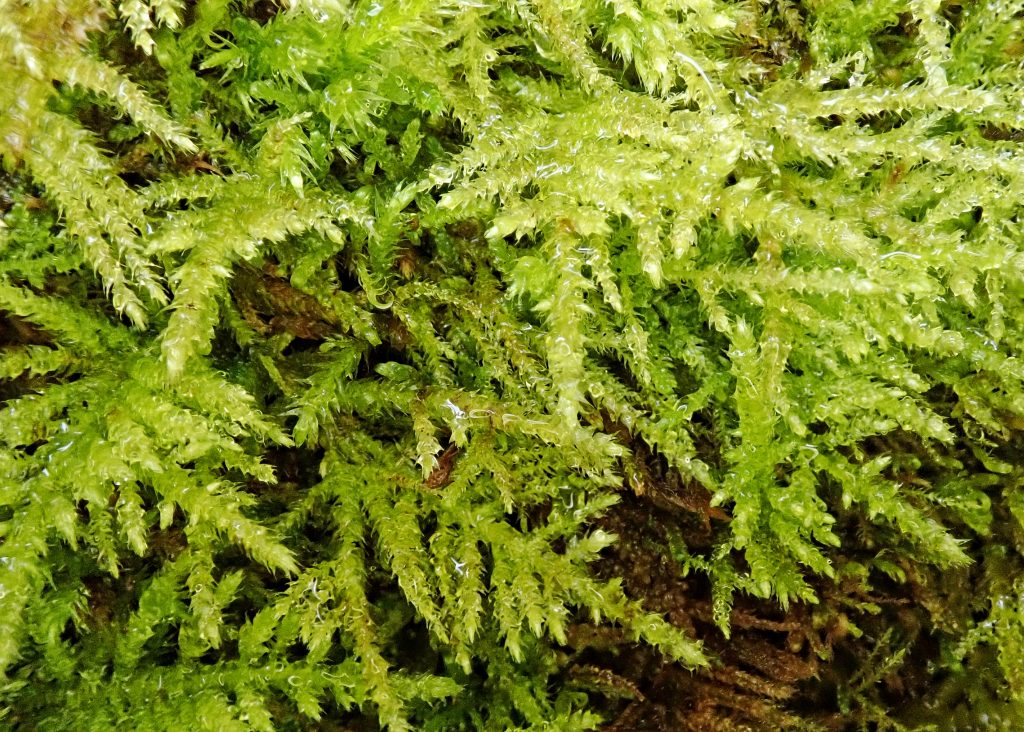
The other day, while waiting in her courtyard for a very nice, older client to put on her sweater, I spied this large, decorative landscape feature that was covered in moss. Upon closer examination I could see that there were at least 6 different mosses, two Cladonia lichens, and a liverwort. I grabbed a couple shoots of a feather moss that didn’t look familiar, and then we went on our way.
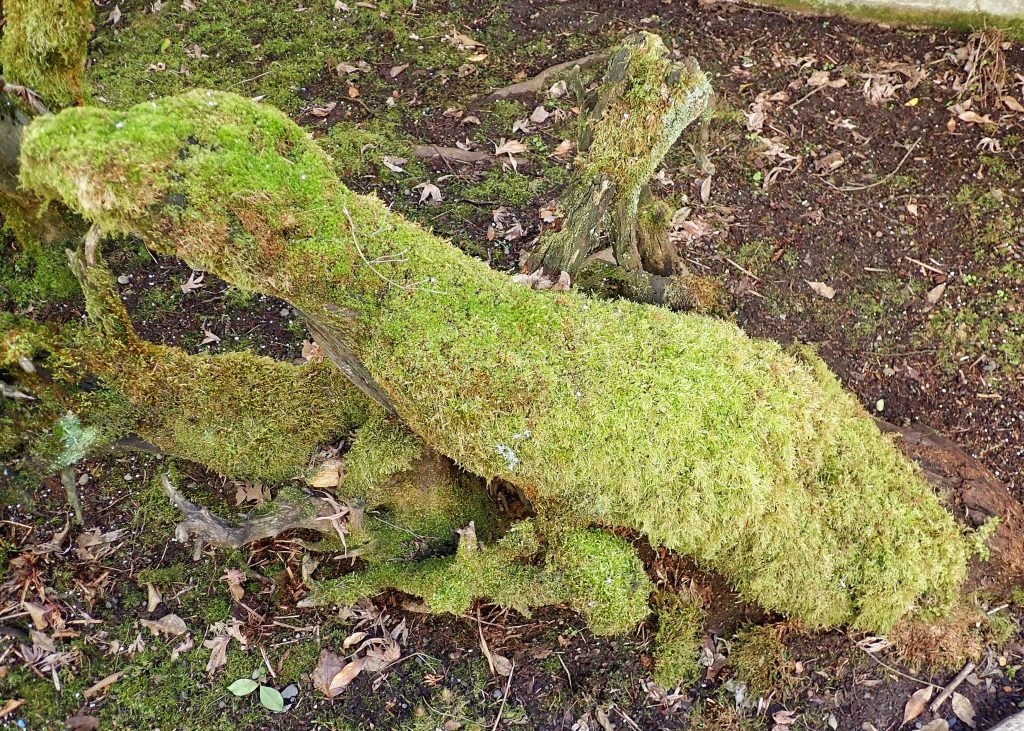
During our ensuing conversation about those mosses she graciously gave me permission to return with a camera to document them, and I did so today, although I was ill prepared and lacked backup when my camera battery died. But I did learn that the feature was myrtlewood driftwood that she had purchased on the Oregon Coast 20 years ago. And I’ll be going back with a fresh battery and some specimen bags to figure out what else is there besides a small patch of Rhytidiadelphus triquetrus, some Kindbergia praelonga, and this Sciuro-hypnum oedipodium.
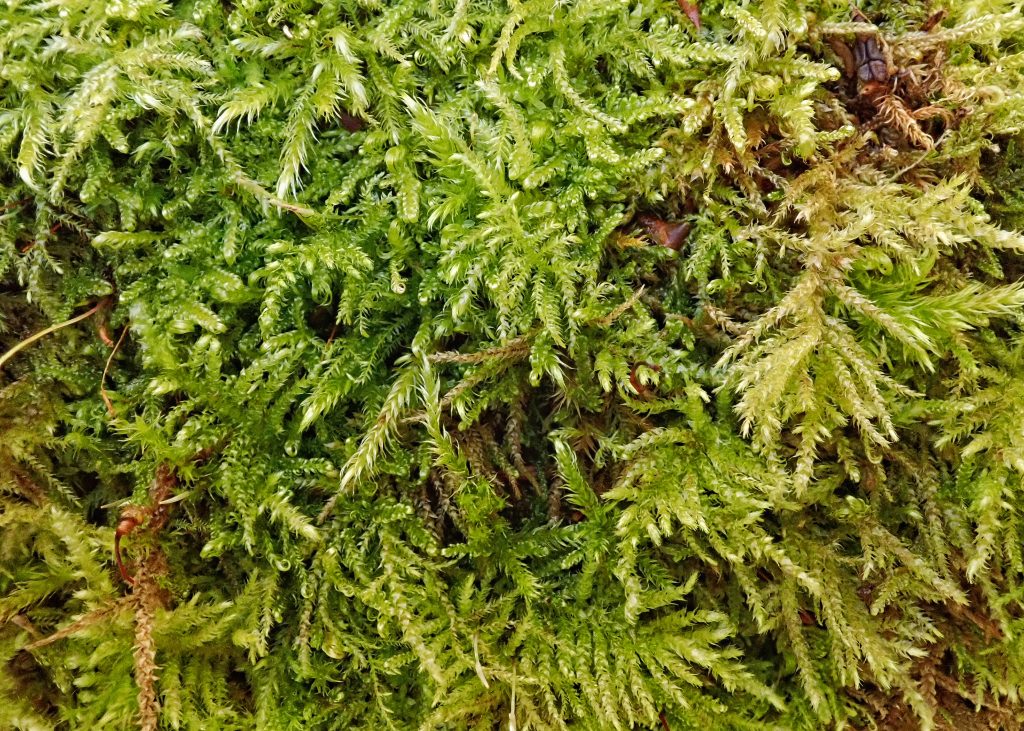
It took quite a bit of time to even find a starting point for identifying this moss, and I just got lucky at seeing someone mention that most misidentifications of East Coast Kindbergia praelonga were actually Sciuro-hypnum starkei, but that S. starkei was monoicous, which was one of the few traits I had ascertained about my mystery moss. Terry McIntosh agreed that it was a Sciuro-Hypnum, but warned me it was a tough genus to crack.
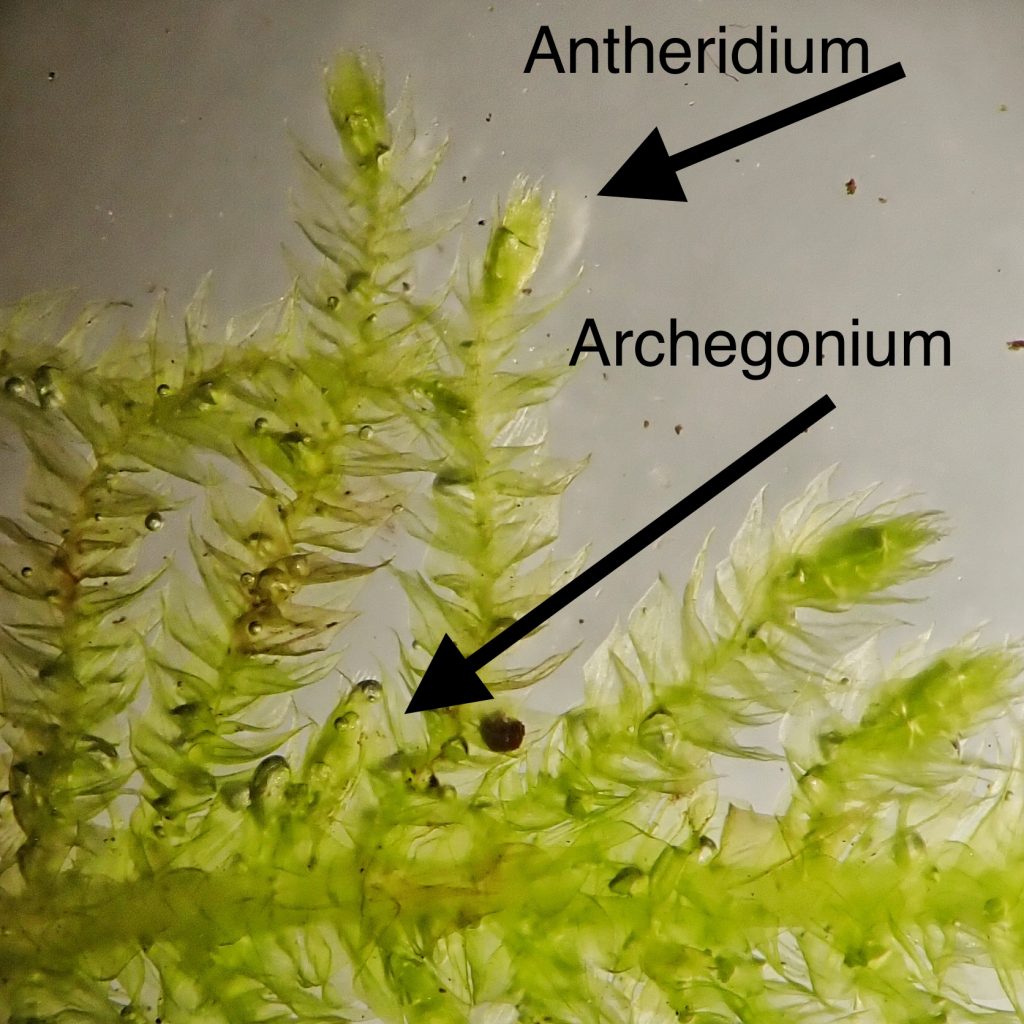
And I soon learned why- there is a tremendous amount of variation within each species, and even within the same shoot or leaf. Couple this with intergrading between species and it is definitely problematic. But eventually, after much hunching over a microscope in confusion, and then more of that after reading the paper (Ignatov/Milyutina; 2007) Terry shared with me that compared the formerly conspecific species S. curtum and S. oedipodium, I came to the conclusion I was in possession of Sciuro-Hypnum oedipodium, although if either of them were poisonous I wouldn’t eat this one. Ultimately, after several photo dumps, diagnostic measurements, and ratios, Terry did agree with my assessment.
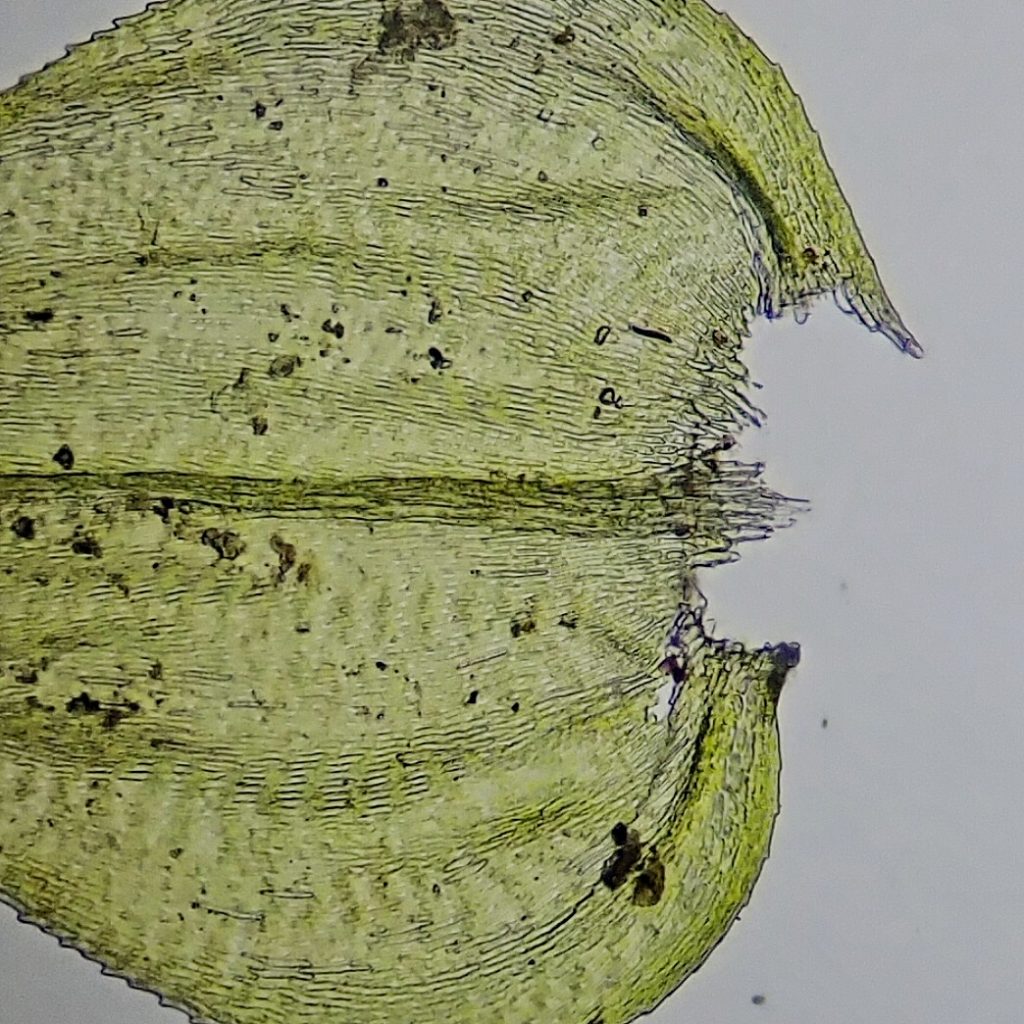
Description– Light green, medium sized, prostrate to arching pleurocarpous moss; shoots pinnate, often irregularly so; leaves spreading, overlapping, longly and broadly decurrent on the stem; leaves chordate to ovate, widest point at 1/6-7 of leaf length, margins serrated; mildly falcate stem leaves with long apex, acuminate branch leaves; costa weak and extending less than 3/4 of the length of the leaf; median cells narrow, (ratio 1:6-7) less than 60 microns long; the seta is rough, and the capsule is short, straight, and horizontal.
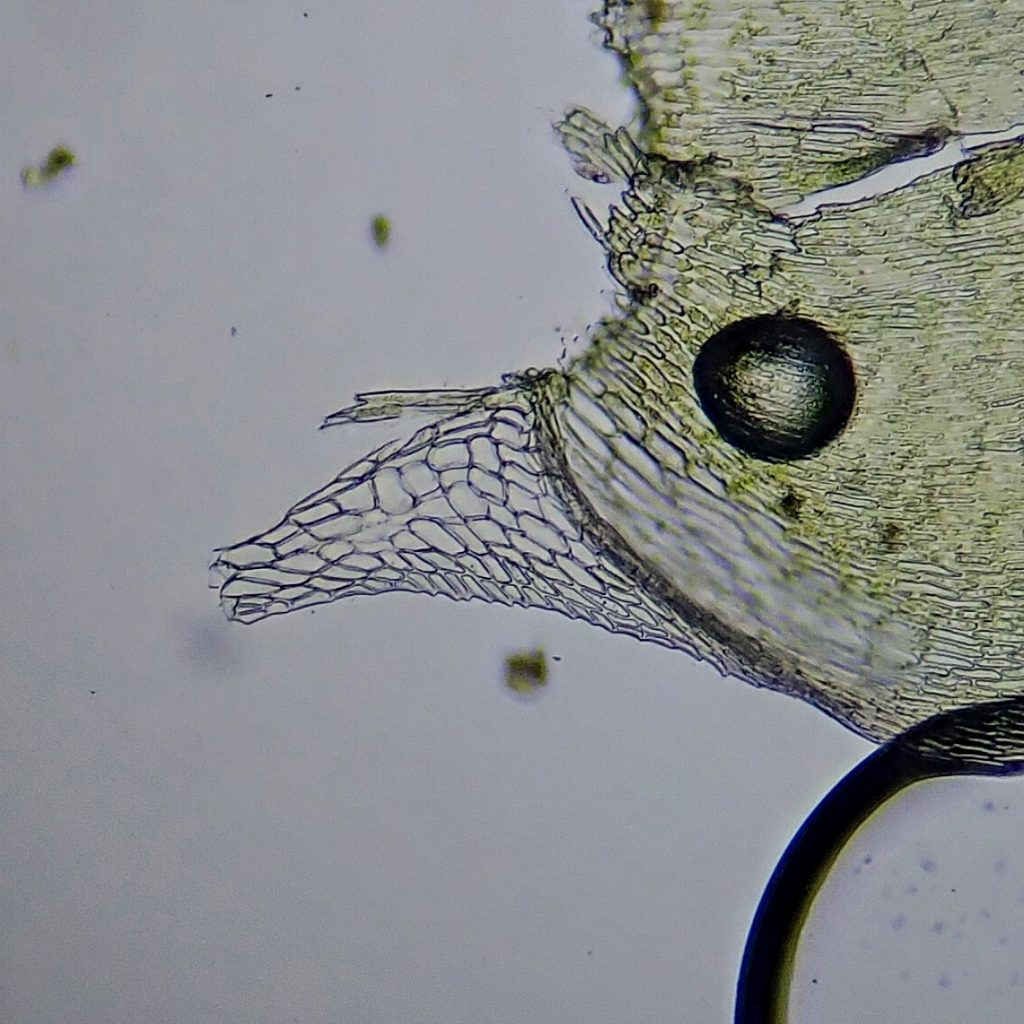
Similar species-Even more so than in most mosses one needs to compare multiple, often microscopic, traits to determine a species; S. curtum is uncommon in our region, its leaves are wider and the widest part is nearer the base (1/7-10 of the way up the leaf), the median cells are longer and narrower, leaves are narrowly decurrent, and the capsule is long and strongly bent; S. reflexum has a costa extending to,or almost to, the apex.
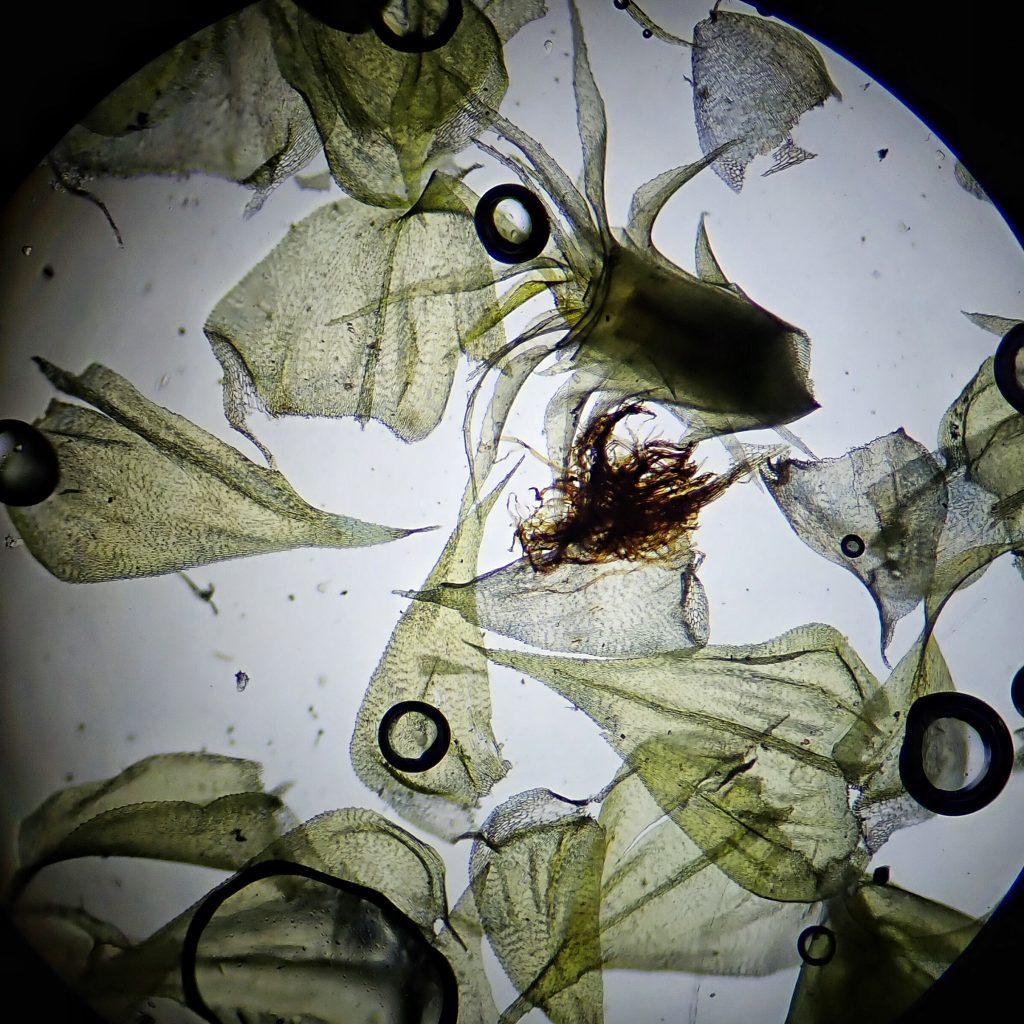
Habitat– Found on soil, logs, tree bases, usually in or near shady, wooded at all elevations.
Range– Western North America, ne Asia; region wide in appropriate habitat
Etymology of names– Sciuro-hypnum translates roughly as ‘squirrel-tailed moss’, although I don’t see the form of this moss as looking more like a squirrel’s tail than most mosses. The specific epithet oedipodium translates from the Greek as ‘swollen foot’ and apparently refers to the seta being swallows below the capsule, although I see no mention of that in any of the formal descriptions of this species.
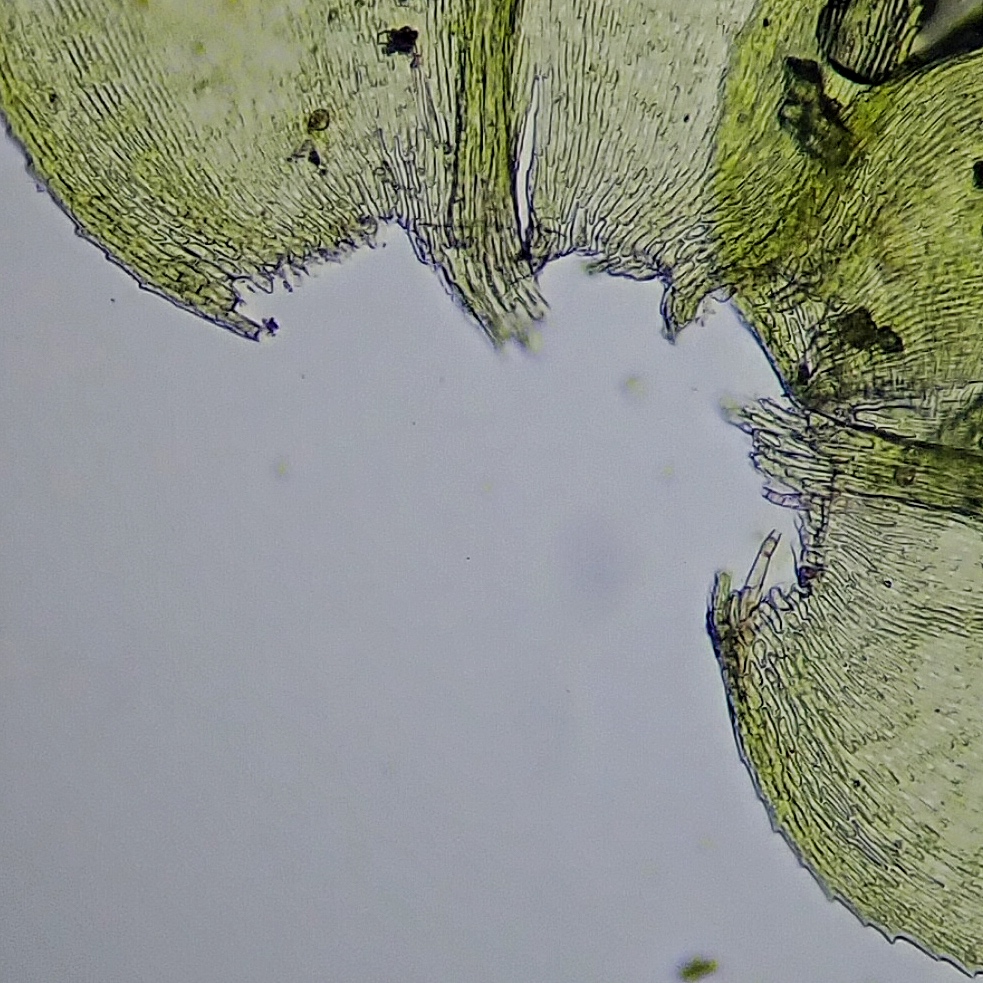
http://www.efloras.org/florataxon.aspx?flora_id=1&taxon_id=250099416
http://beta.floranorthamerica.org/Sciuro-hypnum_oedipodium
http://fieldguide.mt.gov/speciesDetail.aspx?elcode=NBMUSAA010
https://wnmu.edu/academic/nspages/gilaflora/brachythecium_oedipodium.html
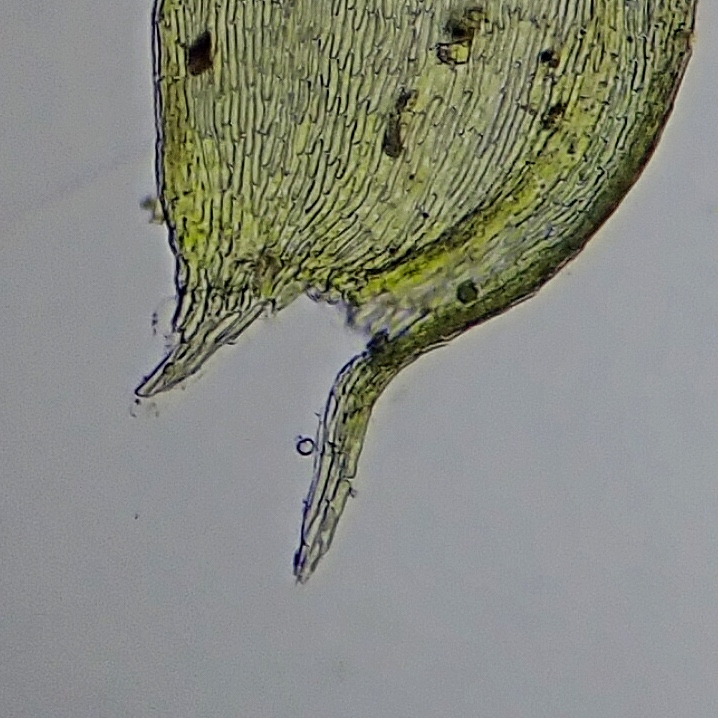
Impressive!!
Thank you, Margaret!